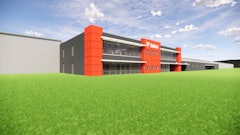
Increasing productivity is never far from the minds of industry pros. But how to get there, given the many components at play, is where money is made or lost. From hiring to adaptation of new technologies, each step demands analysis and setting attainable goals. You can go to a casino, put your bankroll on Red, cross your fingers and hope for the best if you want. But there’s a reason you don’t.
But what productivity strategies are really working?
With the advent and integration of industry-specific technology on the job site, the options are rapidly growing. According to the World Economic Forum, in 10 years the construction industry will be almost entirely digitized, with an overall possible savings of $1.2 trillion globally due to increased efficiency and productivity. But each new technology comes with its own set of benefits and possible hurdles - not the least of which is the impact on workers.
So while it may be tempting to jump on board with the “next big thing,” often adjusting your current practices, and folding in new technologies methodically, will allow for a smoother, more effective path towards reaching productivity initiatives.
Hire Early
One small but surprising adjustment that improves productivity is when firms choose to onboard key stakeholders. A recent study completed by the Lean Construction Institute and Dodge Data & Analytics found that the best performing projects hire everyone that will be working on the project at the start of the design phase. This includes all specialty trades like the general contractor, electrical contractor, and mechanical contractor.
Fully 76% of the best projects in the study engaged key stakeholders before or during conceptualization. Hiring early ensures that those who will be implementing the design in the field have an opportunity to influence how the design happens.
Collaborate Regularly
Another consistent practice of high performing teams is collaboration. Integrated project delivery (IPD) and design-build delivery methods encourage the highest degree of team collaboration and increase the probability of project success.
But encouraging collaboration can be as simple as co-locating teams in one big room; a simple change that the study found to yield significant results. And while co-location may not be possible on construction sites, technology can offer team members similar access to one another. Smartphone-based tools like video calling and real-time messaging go a long way to improve collaboration and communications between the field and office.
Collaboration also needs to extend to how firms approach technology. While it’s not necessary for all project stakeholders to use the exact same software, they DO need access to the same data set. Reaping the full rewards of technology requires that all data is integrated and shared across systems. ERP needs to share with field collaboration tools and field collaboration tools need to be sharing with ERP.
Free movement of data across the construction technology ecosystem is absolutely key.
Align Incentives
How construction firms write their contracts also plays into overall project success. The best projects consistently used integrated project delivery, which, beyond encouraging collaboration, also aligns all parties (owner, architect, and contractor) to a single contract. This ensures a shared risk/reward approach to unforeseen costs, and to savings.
The best projects approached their contracts from the perspective of, “How do we support the team with this contract?” rather than, “How do we use this contract to move the risk to someone else?”
Don’t Make Disruption a Dirty Word
A final challenge for construction companies to consider is how they think about technology in general. Many firms are looking at technologies to augment existing workflows. While this is a good first step, it shouldn’t be the only step. True technology disruption is often what leads to the most significant gains.
If the industry isn’t willing to explore disruptive measures, chances are the full benefits that technology has brought to other industries may never be realized. It’s time for construction firms to get comfortable with the idea of rocking the boat.
About Rhumbix
Rhumbix modernizes construction field operations, helping builders go paperless in the field and improving how they measure and manage labor productivity. Their Field Intelligence Platform is a cloud-based mobile workforce management solution that collects and digitizes data from previously paper-based workflows. This ensures all project stakeholders have the best data, when they need it, to make better decisions and draw actionable insights. Headquartered in San Francisco, Calif., Rhumbix was founded in 2014 by Navy veterans with deep experience in the construction industry and is backed by tier-one investors. For more information visit: www.rhumbix.com



























